Hi all :Got a BTU problem.I’m building a new house and doing most of the work myself.I’m heating with with baseboard and the Master Bathroom calls for 5300 BTUs of heat loss,but I only have about 5′ of available wall space .the rest is taken up by the 48′ vanity and the whirlpool tub.Reg.and high capacity baseboard won’t give enough BTUs.The only options I can think of are a kick heater(sounds like a pain) radiant,or some baseboard that can be double run on top of each other,any body got any other ideas??
Discussion Forum
Discussion Forum
Up Next
Video Shorts
Featured Story
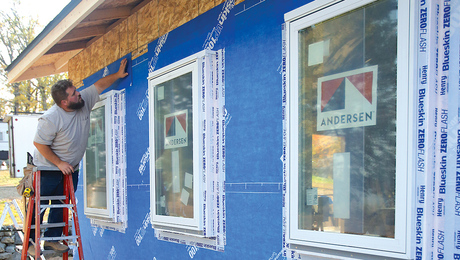
Getting the details right for a wall assembly with the control layers to the exterior and lots of drying potential.
Featured Video
SawStop's Portable Tablesaw is Bigger and Better Than BeforeHighlights
"I have learned so much thanks to the searchable articles on the FHB website. I can confidently say that I expect to be a life-long subscriber." - M.K.
Fine Homebuilding Magazine
- Home Group
- Antique Trader
- Arts & Crafts Homes
- Bank Note Reporter
- Cabin Life
- Cuisine at Home
- Fine Gardening
- Fine Woodworking
- Green Building Advisor
- Garden Gate
- Horticulture
- Keep Craft Alive
- Log Home Living
- Military Trader/Vehicles
- Numismatic News
- Numismaster
- Old Cars Weekly
- Old House Journal
- Period Homes
- Popular Woodworking
- Script
- ShopNotes
- Sports Collectors Digest
- Threads
- Timber Home Living
- Traditional Building
- Woodsmith
- World Coin News
- Writer's Digest

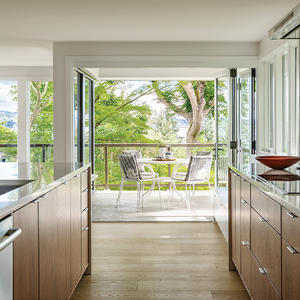
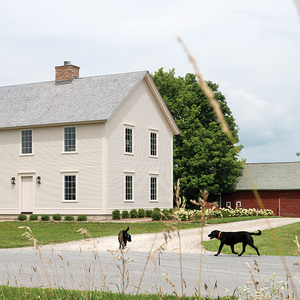
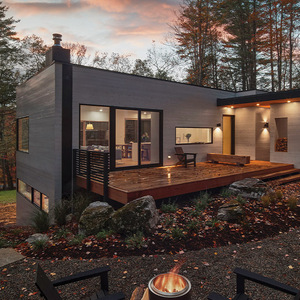
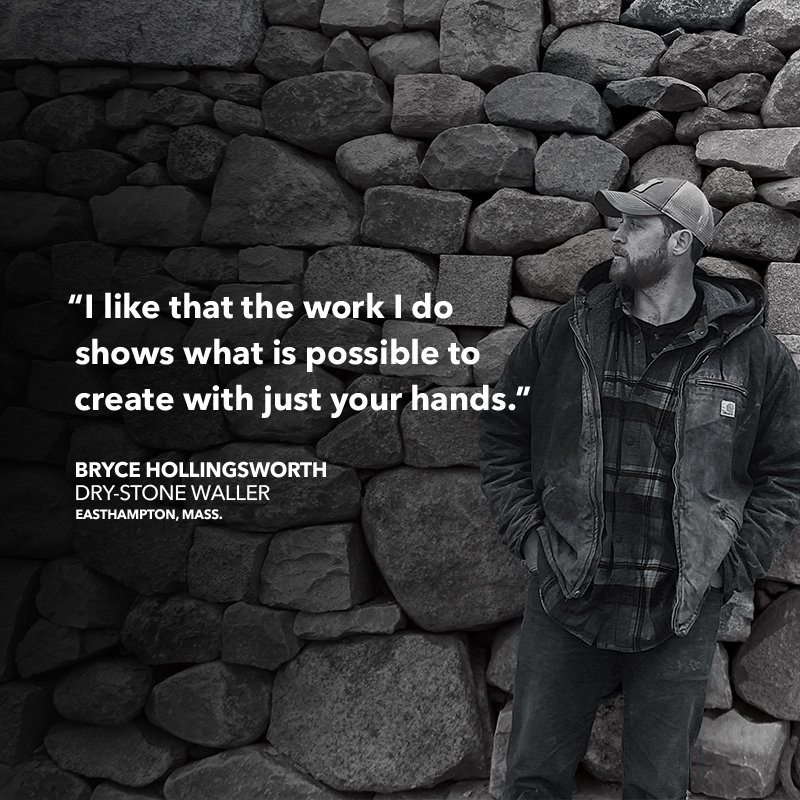













Replies
I'm no expert, but when I lived in MA, I saw a double HW baseboard heater. Inside the normal case there were two runs of pipe with fins. If you can't find one, I don't see any reason you couldn't make one yourself (so long as the case is big enough for two of the pipes on top of each other).
called high output BB heater. normal ones are about 6" tall and the high outpuit are about 9-1/2" to cover the double run.
Another option is a convection heater which is a taller box that has multiple coils and an option for a fan
Excellence is its own reward!
Run radiant tubing under the tub and platform (if there is one).
Turn tub into a big radiator.
You may even be able to use standard fin tube sections, and high temp supply under there, depending upon the design. Less complicated this way.
As a bonus, the tub starts and stays warm.
Another option is one of those snazzy radiators that double as a towel warmer.
You can also run radiant tubing under the floor, and/or the walls behing the tub.
Nothing like warm tile on bare feet.
I was thinking of running some baseboard inside the whirlpool enclosure 1 because its on an outside wall,and 2 to keep the tub warm.I was thinking that the enclosure might need a small vent of some type.F/H just ran an article on electric radiant heating I'm still checking out,anybody else try it?
I do not think any sort of vent would be required for the enclosure.
If you wanted to limit the under-tub temperature, it would be better to do so by controlling the water temperature. A globe valve would be the simplest control, or you can get as complicated as you like... If you want to control the tub temp independent of the baseboard temp, you would probably want a separate parallel loop. The main advantage here is that you could 'over-radiate' the tub without the forethought of estimating the actual heat requirements, than adjust it later real time as needed.
The disadvantage is the added complexity.
Electricity is simply very expensive in the Northeast. Otherwise, there are many obvious advantages to it.
A really nice system is to make some radiant loops under the floor with the hot water line on it's way to sink and tub. You can include a towel warmer as well. Then, when any hot water being used in bath, these items warm. Very popular in Europe where they try to heat the room in use, not the whole house all the time the way we do. I was in one hotel that must have had extra loops under the bath mat area; it was toasty when stepping out of shower, and it dried quickly. I will do this in my next home.
In Japan, I have been in hotels with a loop behind the mirror so that the mirror does not steam up when the shower is in use.
Those towel heaters are also very popular and serve to warm the room as well as the towels.
Paul
Hey Paul,wouldn't you be wasting a substantial amount of hot water with the longer hot water loops?As for heating the room I did run a 12/2 line for a 240 volt 2000 watt wall heater to take the chill out of the room when the main boiler is not in use.Do you prefer a certain type of radiant flooring over another?
When you say "wasting hot water", the system I was describing gives up some heat from the water on its way to the sink or tub/shower. Because the hot water is much hotter than the mix we actually bathe with, you won't feel the loss of heat, but the floor or towel bar etc., warm quite well, and give an extra slug of Btus to the room.
Yes, there would be some extra "cool" water lost due to the extra feet of pipe, but not a great deal. The system is somewhat self regulating, ie., you only have the extra heat when actually using hot water in the bathroom. Your baseboard system would still be available for whatever baseline heat you desired, up to the limit of its capacity.
Someone already pointed out, there is nothing heatwise more comfortable for bathroom heat than a radiant floor. The Romans had it figured out 3000 years ago.
Re brand vs brand, some of the pros who deal with many different brands can better advise durability etc. I like to keep systems simple, and be able to inspect or repair without major renovation.
Is the skirt around the tub paneled, or tiled, or part of the tub? If you have maintenance access to it, you could use a water coil heater with fan, and grille to direct hot air across the floor. Once again, pulling heat from the actual bath water on its way to the tub.
You may have already answered this, but what is the source of heat for the domestic hot water?
PaulEnergy Consultant and author of Practical Energy Cost Reduction for the Home
My concern with 'leeching' off the DHW would be the energy that is wasted in warm months.
May not amount to much. I suppose you could setup a warm weather bypass design, but then you could run into stagnant water issues.
Also, no warmth to the floor on the way into the shower or tub. Great on the way out, and very simple.
I understand your concern.
We like some extra heat in the baths all year around to help dry towels (heated towel rack) and to help dry the bath room to avoid mold. If you used a power blower/water coil, you could simply not turn it on in the summer. The quick pass through of the water would not rob much heat compared to a radiant or finned pipe design.
Re; cost of heat, unless you are heating your domestic water with ele, it is probably cheaper to steal heat from the water than from an ele coil in the bath, when you want the heat. "Heat" from our gas water heater is so much less costly than our heat pumps, that we now use a coil in the downstairs central air plenum as our primary heat source.
I have not done the following but would like to try it: running a couple of finned hot water loops around the base of a shower stall behind the tile, perhaps packed in sand. The "heat sink" would give up heat for quite a while thus speeding the shower stall dry time. A little off the wall, but I like innovative approaches. If interested, I can tell you how I recoup heat from my den gas log fireplace.
PaulEnergy Consultant and author of Practical Energy Cost Reduction for the Home
In Japan, I have been in hotels with a loop behind the mirror so that the mirror does not steam up when the shower is in use.
Yea, isn't that cool?! I was in a hotel in Osaka that had that!
Although the electric toilet bowl with all the buttons was confusing. ;)
Barry, I never got to fly the electric top-of-the line toilet. I think you had to have a license, and parachute. Saw a Toyo brand toilet in a store window that would cost $6000 US. Also saw $64 honey dew melons.
Were you surprised to step out of the shower in a steamed up room and see yourself in a perfectly clear mirror? Pretty scary, I'm sure.
They do make good use of their limited energy, ie.,split system a/c with individual evap/fan/thermostats in each room. (very upscale homes only)
Did you spend much time in Japan? PaulEnergy Consultant and author of Practical Energy Cost Reduction for the Home
Barry, I never got to fly the electric top-of-the line toilet. I think you had to have a license, and parachute. Saw a Toyo brand toilet in a store window that would cost $6000 US.
$6000? 'must be the model that does an analysis of your waste and modems it to your doctor (I'm not kidding; there is such a beast). The one I saw, I found out later, has built-in bidet functions, with the idea that TP would no longer be needed.
Were you surprised to step out of the shower in a steamed up room and see yourself in a perfectly clear mirror? Pretty scary, I'm sure.
It's always scary to see myself in a mirror ;). But I was sure I wasn't over the jetlag.
Did you spend much time in Japan?
Nope, just there for a few days. 'didn't see much. Friendly people and an awfully clean place, though.
When you say baseboard, do you mean electric baseboard or hot water baseboard?
I meant hot water baseboard. I assumed that was what you were considering from your original question.
I meant hot water.If standard hot water baseboard is putting out about 560 BTUs at 180o per foot ,I figure that by the time it gets to the second floor M/bath it should be about 160o or 430 BTUs per foot 430x 5' =2150 BTUs High capacity about 3100 BTUs. I think these calc. are right The heat loss is 5300 BTUs so I need something to make up more heat
I assumed you meant running some hot water fin tube under the tub.
If radiant floor is out of the question, I bet you could indeed makeup the difference with fin tube under the tub. The trouble is calculating the output for the enclosed fin tube. The bathroom may not benefit from 100% of the heat input under the tub.
In the absence of any know formula, you could over-radiate under the tub, and use a valve to throttle the flow as needed later to make your bath comfortable.
Just an idea.
Yes ,the tub sits in an outside corner.I was probably thinking of a 2' piece of thin tube on each corner. (I bet you could indeed makeup the difference with fin tube under the tub. The trouble is calculating the output for the enclosed fin tube. The bathroom may not benefit from 100% of the heat input under the tub.) I agree it looks like a hit or miss option.The throttle valve would work but I would have to run a separate loop.The baseboard line has to feed the rest of the second floor.
If you are going to have tile floors than run some fin tube in the joist bays. Zig-zag back and forth in conjunction with the baseboard heater. I've done this many times with no problems and the customers like the warm floors.
Yesterday I couldn't even spell plumber, today I are one.
Sounds almost like radiant.Mike wouldn't you get hot or cold spots being the temperature difference say 160o-130o ,baseboard vs radiant?
I first tried it with an open basement so I could remove it if necessary. It was a bathroom that was tiled with a toe-space heater. It worked so well that I started doing it in kitchens instead of toe-space heaters that always get noisey.
The fin tube is installed in the center of the joist bay and 2/3s down. The heat spreads out well and the tile becomes a conductor or radiator. This method does put heat into the space below too. When ever doing a bathroom renovation with tile floors, I run a few lines down the middle of the floor.
Yesterday I couldn't even spell plumber, today I are one.
How about installing a small old-fashioned sectioned radiator?
Ed
Can I do that with a hydronic system? I was trying to get info on cast iron baseboard but haven't found there BTU ratings yet
I have one in my house, a smallish radiator connected to new 1/2" copper lines and it works nicely. My thought was that if there were only one and it wasn't heating a big space that it wouldn't throw off the balance of the system.
Ed
if this is hydronic consider a spiffy steel panel radiator from Myson, Buderus, or a similar supplier.
Hey WHW I like the myson and buderus units.I can squeak two of the units in to get the right BTUs If I don't go radiant thats the way I'll go.Thank You and everyone else that gave a suggestion!!
PS Good Luck on your trip!!!